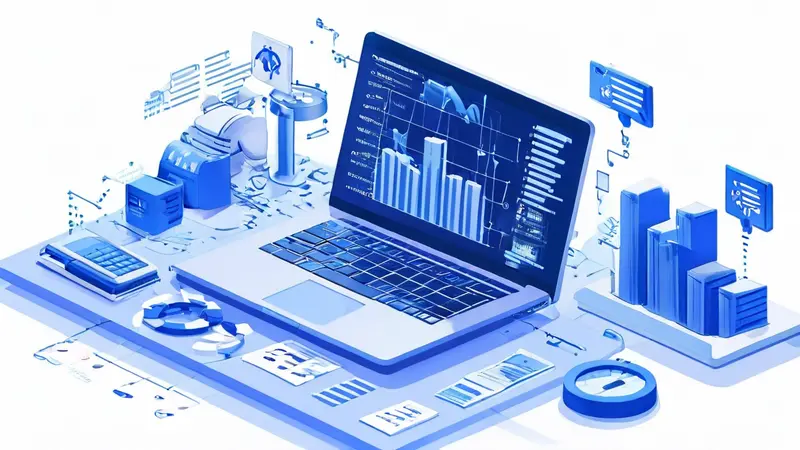This article is compiled by the editor of Downcodes and aims to introduce several common big data platforms and their core concepts. The content covers Hadoop, Spark, Flink and other commonly used platforms, such as Kafka, Elasticsearch, Cassandra, MongoDB and Google BigQuery, and briefly compares and analyzes their functional features. I hope it can help readers better understand and choose a big data platform that suits their needs.

Big data platforms are systems for storing, processing, and analyzing large-scale data sets. Common big data platforms include Hadoop, Spark, Flink, Storm, Kafka, Elasticsearch, MongoDB, Cassandra, HBase and Google BigQuery, etc. Among them, Hadoop is the most well-known big data platform. It consists of the core storage system HDFS (Hadoop Distributed File System) and the distributed computing framework MapReduce. Hadoop can be flexibly expanded and provides users with efficient large-scale data storage, processing and analysis capabilities.
Apache Hadoop is a framework that allows distributed processing of large data sets. It provides high-throughput data storage services through HDFS, while MapReduce processes data and completes computing tasks. The Hadoop ecosystem also includes other tools, such as Apache Hive and Apache Pig, to assist in data processing and analysis.
Hadoop Distributed File System (HDFS) is Hadoop's main storage system, designed to store large amounts of data across thousands of common hardware nodes. HDFS has become an important factor in choosing Hadoop for many organizations because of its high fault tolerance and design optimization for large files.
MapReduce is the core of Hadoop and is used to process and generate large data sets. It works through two independent steps of Map (processing) and Reduce (merging results). MapReduce allows developers to write code that can be executed in parallel and distributed in situations where large amounts of data must be processed quickly.
Apache Spark is another big data processing framework that provides a powerful set of APIs and API interfaces that support multiple languages. Compared with Hadoop, Spark is faster and can better support real-time queries and stream processing. The core of Spark is RDD (Resilient Distributed Dataset), which is a distributed memory abstraction that allows users to perform a variety of parallel operations.
Resilient Distributed Datasets (RDDs) are a basic abstraction in Spark. RDD is a collection of elements distributed on multiple computing nodes and has the ability to recover from failures. They support two types of operations: conversion operations and action operations.
Spark SQL is Spark's component for manipulating structured data. Through Spark SQL, developers can use SQL query language to process data, and can also use DataFrame and Dataset API to manipulate data, combining the query optimization technology of traditional database systems with Spark's fast big data processing capabilities.
Apache Flink is an open source stream processing framework for distributed, high-performance, and generally correct data flow processing and calculations. Similar to Spark, Flink also supports batch processing and is designed to provide low-latency, high-throughput data processing.
In the Flink platform, data flow processing is a core concept. Unlike batch processing systems, which can only process limited data sets, stream processing systems are designed to handle infinite data streams, capable of processing data generated simultaneously as events occur.
Flink allows for stateful computation, which means that the system can store information about previous events and use this information when computing new events. This provides the possibility for complex event pattern recognition, streaming data aggregation, and global state updating.
In addition to the three popular big data processing platforms mentioned above, the industry also uses many other solutions to meet specific needs.
Apache Kafka is a distributed streaming platform mainly used to build real-time data pipelines and streaming applications. It handles data streams efficiently and provides publish-subscribe and message queue models.
Elasticsearch is a search and analysis engine based on Lucene. It is often used to implement complex search functions. In addition, it is also often used as a data platform for logs and interactive analysis.
Cassandra and MongoDB are NoSQL database systems that provide ways to store and process data other than traditional relational databases. These systems are particularly suitable for processing large-scale data sets and provide high performance and scalability.
Google BigQuery is a fully managed data warehouse that allows rapid analysis of large data sets using the SQL language. Because it relies on Google's powerful infrastructure, BigQuery can analyze extremely large data sets without requiring any infrastructure configuration.
1. What are the common types of big data platforms? Big data platforms can be divided into many different types, such as analytical databases (ADB), data warehouses (DWH), real-time data processing platforms, Hadoop, etc. Each type of big data platform has its specific application scenarios and advantages.
2. Which big data platforms are well-known in the industry? In the industry, there are some very well-known big data platforms, such as Hadoop, Spark, Apache Kafka, Apache Cassandra, etc. They have extensive applications and community support in the field of big data, and are used by a large number of enterprises to build data warehouses, real-time data processing and analysis and other scenarios.
3. What are the differences in the functions and features of different big data platforms? Various big data platforms vary greatly in functions and features. For example, Hadoop is a distributed storage and computing framework suitable for processing large-scale structured and unstructured data; Spark is a fast big data processing and analysis engine that supports batch processing and streaming processing; Kafka is a A high-throughput distributed messaging system, often used for real-time data stream processing, etc. Depending on specific needs and business scenarios, choosing the right platform can maximize value.
I hope this article can provide readers with some useful references. The editor of Downcodes will continue to bring you more exciting content.